NASCAR may have been founded around moonshine, but those early days of running “white lightning” are long gone. Nowadays, auto enthusiasts prefer to run a different kind of shine, and unlike those hot-rodding bootleggers, this stuff won’t force you to run from the fuzz.
Homemade DIY alternatives are as numerous as crashes at Talladega, and nowhere is this more apparent than in the world of car detailing, with liquid car detailing solutions leading the pack. So is it possible to concoct homemade tire shine with a bunch of random ingredients you’ve got lying around the house? It’s not like you have to worry about a peeling clear coat or hard water spots when caring for tires. So why not get play “mad scientist,” and mix-up a potent shine of some sort?
Now before we get too “antsy in the pantsy” over talking tire shine, let’s get one thing straight: There’s a reason why the tire dressing business is so fucking profitable. For decades, the world’s wealthiest chemical companies have spent an asinine amount of cheddar on researching and testing tire shine products, just to guarantee that they work.
That being said, please don’t get all hot under the collar when your homemade tire shine solution isn’t lasting nearly as long, or bringing the thunder like a $1 billion dollar investment from 3M. You are here because your cheap ass is trying to make due with what you’ve got, and you’re curious to see if all those post-apocalyptic survival supplies you’ve been hording in your auntie’s garage will cut the kimchi.
Well fear not good citizen! The following three, relatively decent, super simple homemade tire shine recipes are here to make your quest for frugality a reality. While we’re at it, I guess we might as well address some of the common issues associated with homemade solutions of this caliber, and maybe even throw in a brief FAQ section, just for shits-and-giggles. Onwards!
3 of the Best Homemade DIY Tire Shine Solutions
While a lot of people have their own homemade tire shine recipe (tortoise saliva and turpentine anyone?), the following three oddball entries are generally accepted as the best, and safest solutions. However, just to err on the side of caution, we strongly suggest using protective gear such as nitrile gloves and eye protection when concocting an automotive “tincture” on one’s own. The last thing we want is for you to end up in the hospital because you just discovered that you are allergic to any combination of the following ingredients.
However, just to err on the side of caution, we strongly suggest using protective gear such as nitrile gloves and eye protection when concocting an automotive “tincture” on one’s own. The last thing we want is for you to end up in the hospital because you just discovered that you are allergic to any combination of the following ingredients.
It may sound like a frilly Hipster highball, but when you combine castor oil and alcohol with a little auto shampoo and water, the natural shine of the rubber and synthetic materials contained within modern tire compounds really pops. Here is what you’ll need to make this oddball “cocktail.”
To whip-up this magical mixture, you’ll first blend the automotive shampoo and water to wash the tire. Use a tire brush to get into all of those little grooves and textured surfaces on the outer sidewall.
Use a tire brush to get into all of those little grooves and textured surfaces on the outer sidewall.
After scrubbing the rubber, use some rubbing alcohol to further clean the tire. The alcohol essentially acts as an extra step to further remove contaminants from the tire’s sidewall, and should be used sparingly, as it can dry out rubber rather quickly. A modest splash of rubbing alcohol on a microfiber towel or applicator pad will be all that is needed to wipe the entire tire clean.
Once the tire has dried, splash some castor oil on a different microfiber towel or applicator pad, and hit every square centimeter of the tire’s sidewall in a circular motion until a sheen can be seen from every angle.
Out of all of the products on today’s list of homemade tire shine formulas, baby oil has to be the cheapest and slipperiest. Not only does this slick mineral and aloe-based oil add insane amounts of shine to anything it touches, but the infusion of Vitamin E has caused it to become prized for its ability to nourish cracked and drying surfaces, and that includes automotive rubber.
Here is what you’ll need:
First, pour the 1/2 cup of water into a bucket, add the baby oil, and mix with three drops of automotive shampoo. Pour the solution into a spray bottle and shake it up. Spray the homemade tire shine directly onto the tire , as well as onto a clean microfiber towel. Once the tire is completely covered and slick-looking, allow the solution to sit for a minute or two before wiping it away with a separate microfiber cloth.
While the smell of burning rubber may excite fans of drag racing, most people abhor this pungent automotive aroma. Try laying a citrusy smackdown on UV damage and cruddy contaminants with the dry-rot-reducing power of a lemon oil tire dressing solution. When blended properly, this concoction acts as both cleaner and conditioner.
Try laying a citrusy smackdown on UV damage and cruddy contaminants with the dry-rot-reducing power of a lemon oil tire dressing solution. When blended properly, this concoction acts as both cleaner and conditioner.
First, pour the automotive shampoo into a bucket and then add the water along with the Borax. Stir the concoction until fully mixed, adding the lemon oil last. Once fully blended, dip the brush in the solution and clean the tire, reapplying fresh amounts of solution as necessary. Rubber thoroughly scrubbed, break out a clean microfiber towel and conduct a final, dry wipe down.
A Few Other “Unique” Homemade Tire Shine OptionsNaturally, there are a ton of other homemade tire shine options out there, most of which rely upon common household products. The issue, is that from a shiny tire’s viewpoint, most of these ingredients really aren’t all that great when it comes to durability and visual appeal. So take the attached video with a glob of grease, because the aforementioned DIY tire shine solutions are about as good as it gets.
The issue, is that from a shiny tire’s viewpoint, most of these ingredients really aren’t all that great when it comes to durability and visual appeal. So take the attached video with a glob of grease, because the aforementioned DIY tire shine solutions are about as good as it gets.
In order to help you remember the core components of routine tire care, we suggest following the classic T.I.R.E. acronym, for it still rings true today. This will not only help keep those sidewalls looking spiffy, but potentially prolong the life of the tire compounds themselves, and therefore make your windshield time all the more safe.
“T” is for TIDYThe easiest way for someone to keep their tires in good shape, is to clean them regularly. Washing away tire contaminants like grime, brake dust, pollution, and road salt helps remove the risk of this crud embedding into the rubber.
Washing away tire contaminants like grime, brake dust, pollution, and road salt helps remove the risk of this crud embedding into the rubber.
By keeping your tires tidy, and routinely applying a protectant, contaminants and UV rays alike become far less of an issue, as both are the core cause behind premature cracking and blowouts.
“I” is for INSPECT The old “penny test” may be a proven method for testing tread depth, but on many tire compounds this means you have reached a dangerously low level of grip. The top of Lincoln’s head on the US penny measures about 2/32nd’s of an inch, which traditionally means it’s time to replace a tire. Don’t wait until your tires reach this level, because your traction at this point will likely border on being dangerous.Automotive tires should undergo monthly maintenance checks, especially when routinely driven. This includes checking tire pressure levels, which should be done every other week, especially since these numbers fluctuate when there are dramatic changes in ambient air temperature.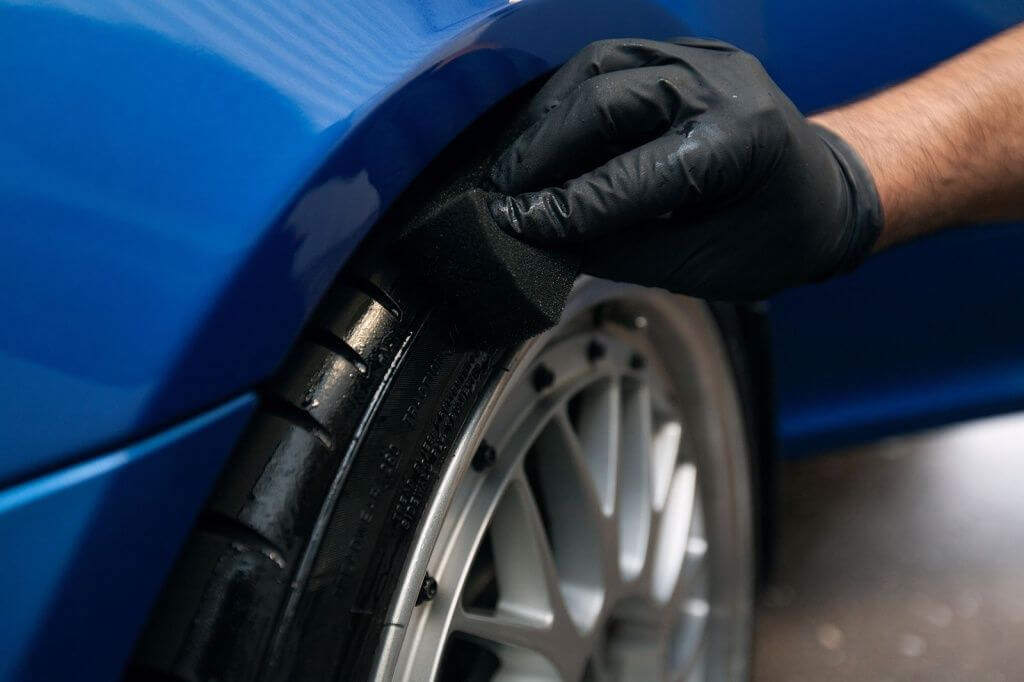
Inspecting tires for cracks, bubbles, or odd wear patterns should also be a routine, with a monthly, or bi-monthly basis being the norm. This will not only help you keep an eye on the condition of the tire compounds themselves, but by detecting uneven or unusual treadwear patterns, you will shine a spotlight on any suspension alignment issues. There is also the issue of improper tire inflation, which can lead to premature wear and potential blowouts.
“R” is for REPLACEMany car owners assume that if there is more than 2/32nd tread depth left on a tire, they’ll be totally fine. This is one of those outdated, shade-tree mechanic recommendations. By the time a tire’s tread pattern has worn this low, traction will have been reduced to a dangerously low point. Play it safe, and replace your tires when the rubber reaches Lincoln’s forehead on the US penny.
“E” is for EASY For those of you who are unfamiliar with tire lingo, this guide will help explain what all the numbers and letters on the sidewall of a tire means.
Having the right tires on your vehicle is just as crucial as routinely inspecting and maintaining them with a tire dressing cleaner. Keeping an adequate load weight, and not exceeding the tire’s maximum capacity is a core way to maintain tire integrity, as is ordering the appropriate tire size.
Overloading a vehicle, or specific areas of a vehicle (like the trunk or truck bed), puts a ton of strain on tires, as every tire compound on the planet comes pre-engineered to withstand a certain amount of pressure. So shop wisely, and know that any tires with the letters “XL” on their sidewall won’t be “extra large,” but strong enough to hold extra air, thus allowing them to carry “extra loads.”
Quick Tip: Don’t forget to check your spare tire every month. Nothing is worse than having a flat tire, and realizing that the doughnut is also low on air or damaged in some way.
Parting ShotsDry rotting tires or tire sidewall cracks are a commonplace, and often avoidable tire malady.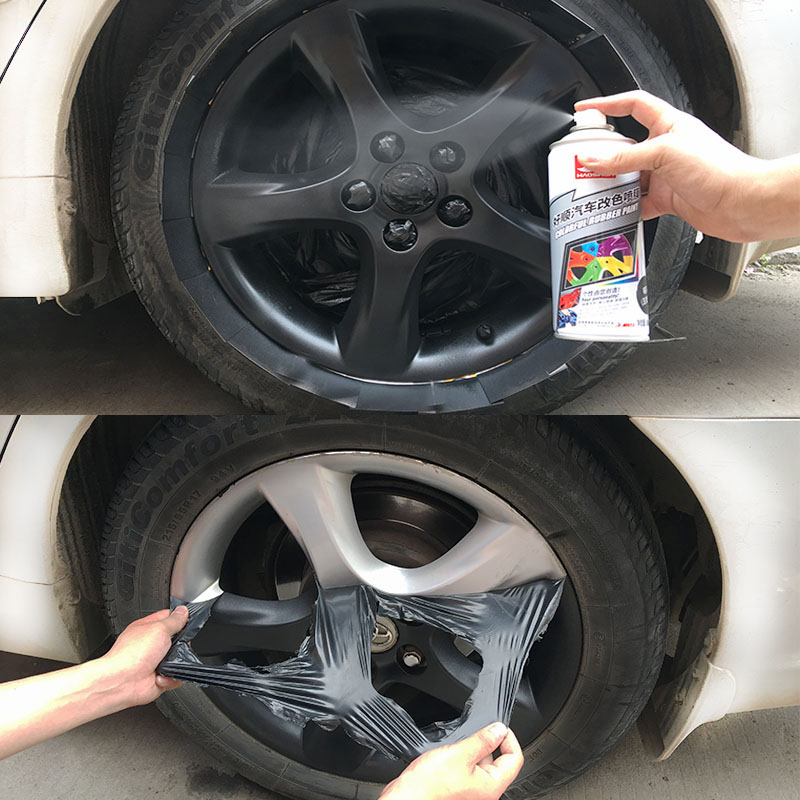 If your tires look like this it is time to replace them ASAP.
If your tires look like this it is time to replace them ASAP.While these homemade tire shine solutions are rather good at improving appearances and protecting sidewalls, extending longevity really boils down to protection, not enhancement. That is why the lemon oil shine option remains the preferred homemade method for accomplishing this vital step.
Just remember, automotive tire care is more than just applying a product or some homemade solution to a piece of rubber. In order to safely enjoy the joys of the open road, one must first inspect and then protect their tires. This rubberized consumable product is the only part of the vehicle that comes into contact with the ground. So take good care of these rolling pieces of rubber, and they will take care of you…
Priscilla February 23, 2020 Tips Leave a comment 2,947 Views
No one likes a dull tire, but do you know that shine tire doesn’t cost if you use the right formulation? You can prepare a homemade tire solution without spending a penny.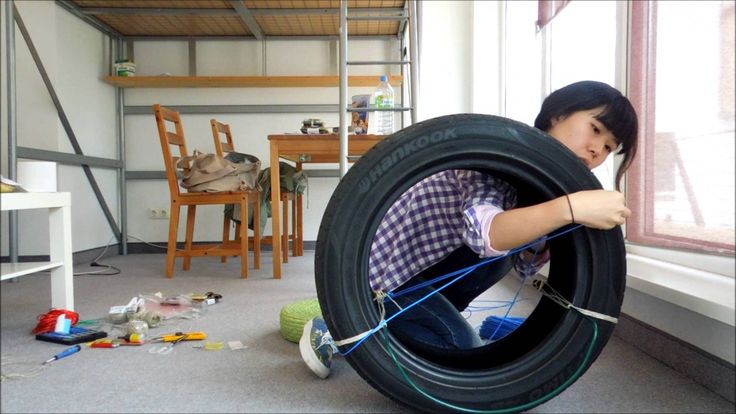
You have finally been able to lay your hands on that gleaming car you’ve always wanted. It’s yours now. But it’s just a few miles that give your tires a very shabby look. It’s such an eyesore! Suddenly your new car seems to have lost much of its appeal. Those admiring glances from your neighbors and passersby are gone too.
Our instructions will help you shine your tires like a true professional. You can use stuff easily available in your house that’ll help you save a lot of money. We are here to get your tires shining again using only a few ingredients readily available in your house to prepare a perfect homemade tire shine. What’s more, you can have them in no time at all. Before you get started, here’s a word of caution. Make sure that you protect yourself with nitrile gloves and do use protection for your eyes before you blend the ingredients.
So, today, we are going to show you how to prepare a homemade tire shine at your home only with these simple tips.
This is an effective yet cheap homemade tire shine ingredient.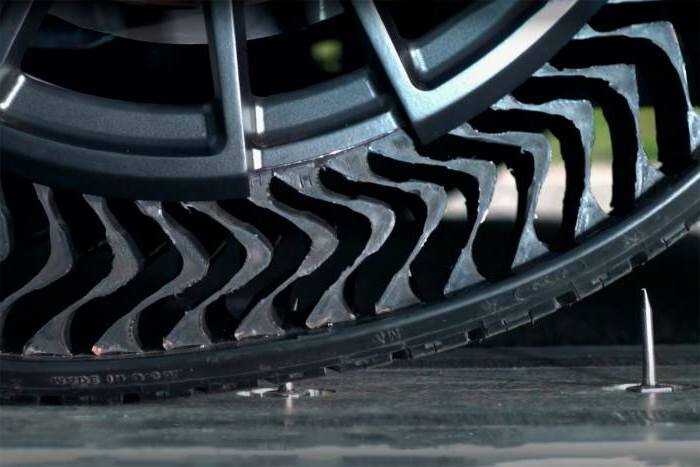 Your car tire is pampered like a baby when you wash it with baby oil. We say pamper as baby oil has no harmful chemicals and is made from natural ingredients. It’s really great for shining your tires, just perfect for your gleaming new car.
Your car tire is pampered like a baby when you wash it with baby oil. We say pamper as baby oil has no harmful chemicals and is made from natural ingredients. It’s really great for shining your tires, just perfect for your gleaming new car.
You Shall Need
The Method
This mixture is just great if you’re looking for an inexpensive way to clean your tires. It’s the perfect homemade tire shine for you! What’s more, it lasts for a few months too! That gives you the chance to clean your tires every week making them look brand new for years.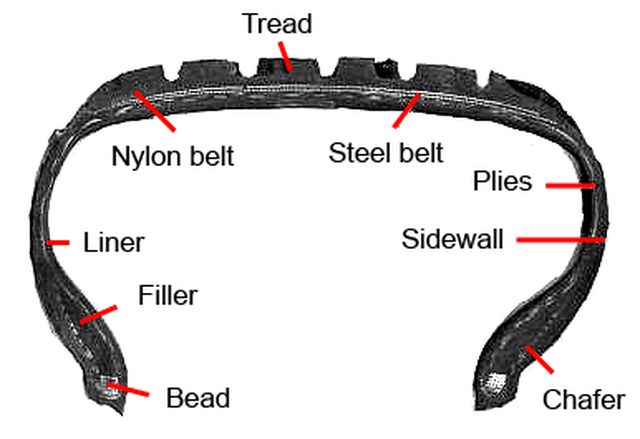
Disgusting as it may taste, Castor oil makes for a really good homemade tire shine when mixed with alcohol. It’s really effective when it comes to shining your tires.
You Shall Need
The Method
We advise you to use a homemade tire shine more like a rubber conditioner. This will protect it from the wear and tear and dry rotting caused by the sun’s UV rays and other contaminants.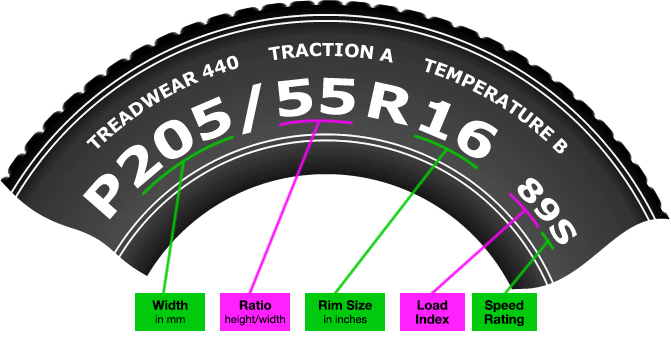 Lemon Oil is the right ingredient for this kind of tire shine, a rubber conditioner. It also acts as a tire wax and protects the sidewall of the tires.
Lemon Oil is the right ingredient for this kind of tire shine, a rubber conditioner. It also acts as a tire wax and protects the sidewall of the tires.
You Shall Need
The Method
Read also: Safety driving tips for truck driver
This is yet another great recipe for squeaky clean tires. Not only does it make the tires shine, it extends their life too. It also helps protect them from UV rays.
Things you will need
The Method
While these are the best tire shine formulation being inexpensive and efficient at the same time, we have some other ingredients too that are good for shining your tire.
You are sure to have a great shine on your tire, just right for your new car when you apply these on your car tires and leave them for a little while.
Things to Remember While using Tire Shine Solution
Conclusion
Taking good care of your car tires gives them a longer life. The tires are more dependable too and have a better grip. The tire shines not only clean your tires, but they also don’t let them degrade. That helps keep your car tires in good shape much longer. Remember, the intention is not just to make the tires look great; they should also be protected for longer life. It’s Lemon Oil that best helps protect your car tires. We hope you find our article on how to make homemade tire shine useful. We feel they are just right for the clean tires that your gleaming new car will look great with. Do share your feedback with us. Goodbye for now!
The tire shines not only clean your tires, but they also don’t let them degrade. That helps keep your car tires in good shape much longer. Remember, the intention is not just to make the tires look great; they should also be protected for longer life. It’s Lemon Oil that best helps protect your car tires. We hope you find our article on how to make homemade tire shine useful. We feel they are just right for the clean tires that your gleaming new car will look great with. Do share your feedback with us. Goodbye for now!
Previous Sarjak Container Lines Tracking Online & Contact Number
Next Truck Driving Schools In Oklahoma
A Full Truck Load (FTL) simply means that the truck will be used to ship …
Since the beginning of the 2000s, automotive cosmetology has been experiencing a real "renaissance", if the processes occurring in it can be attributed to this trend.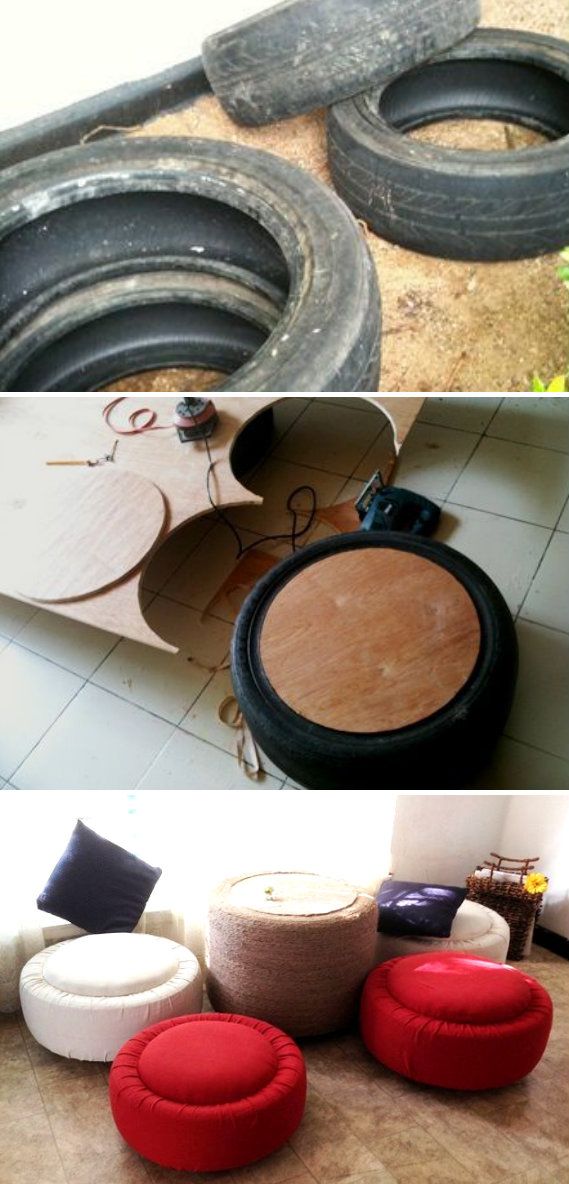 This movement became especially popular during the arrival of manufacturers and the expansion of the range of goods at affordable prices. Almost every system had several dozen types of improvements that could previously be dreamed of. The general interest touched both foreign cars and the domestic auto industry. In both cases, the tire blackening technique has become very popular. But those who want to pay a little, especially if a similar effect can be achieved using do-it-yourself rubber ink. nine0003
This movement became especially popular during the arrival of manufacturers and the expansion of the range of goods at affordable prices. Almost every system had several dozen types of improvements that could previously be dreamed of. The general interest touched both foreign cars and the domestic auto industry. In both cases, the tire blackening technique has become very popular. But those who want to pay a little, especially if a similar effect can be achieved using do-it-yourself rubber ink. nine0003
Contents:
It would seem that the most natural reason for such an operation is the cosmetic design of your car. Indeed, by blackening your own tires, you can disguise their true "age", or hide errors from long-term operation. The successful use of various inks significantly enhances the appearance of the vehicle, making it more respectable and pleasing to the eye.
Indeed, by blackening your own tires, you can disguise their true "age", or hide errors from long-term operation. The successful use of various inks significantly enhances the appearance of the vehicle, making it more respectable and pleasing to the eye.
See also: Inflating tires with nitrogen - the pros and cons. What does filling tires with nitrogen give? nine0003
But besides such a natural cause, which lies on the surface, there is another very important function of such manipulation, namely the protective function. Some types of ink (which includes do-it-yourself rubber ink) after application create a thin layer or “film” on the tire, which becomes a barrier from external irritants. In addition, the “softening” properties of blackeners have also been proven, thereby such elastic rubber will be able to maintain its integrity longer. nine0003 Tire blackening is short-lived and requires frequent maintenance
Before you start painting tires using a do-it-yourself rubber ink, you should find the necessary option that is most suitable for your car. As a rule, this choice does not affect any functions, except for external ones, and depends only on the preferences of the buyer. There are 2 main sales leaders on the market and in automotive stores: nine0003
As a rule, this choice does not affect any functions, except for external ones, and depends only on the preferences of the buyer. There are 2 main sales leaders on the market and in automotive stores: nine0003
.jpg) In fact, the appearance of the tire becomes even worse than before the first painting. nine0008
In fact, the appearance of the tire becomes even worse than before the first painting. nine0008 See also: Do-it-yourself painting of disks with liquid rubber. Pros and cons of painting rims with plastidip
As in any other technique, the desire of "craftsmen" to do it themselves has not gone away. The convenience in this regard lies precisely in the prostate of such recipes for “rejuvenating” your own tires. To the question "How to make rubber ink with your own hands?" more than a dozen actively used and effective methods are available today. We will try to analyze the most common of them. nine0003
Blackening rubber with glycerin is considered to be the most popular method among car owners. With a relatively low cost of the process, a quite good result can be obtained at the output, surpassing some store counterparts. The basis of the solution for painting is the mixing of equal parts of glycerin and water (preferably distilled).
Approximately 150-200 ml of this solution is needed per tire. You can buy glycerin in the most ordinary pharmacy. The expected effect of use is reminiscent of shiny ink. The painting process itself is simple: with a moistened sponge with a solution, slowly and smoothly rub the previously cleaned tire (from dirt, dust and moisture). Unfortunately, glycerin itself is a fatty component, and therefore the durability of such cosmetology is fleeting. nine0003 A popular coloring agent is glycerin
More experienced motorists are familiar with this method. You may have heard from your fathers/grandfathers about the old method of rubbing tires with a bar of laundry soap generously moistened with plenty of water. Those who wish to join such a method may not expect much progress in learning this method. As before, it is a liquid with a bar dissolved inside. However, you should be careful not to go too far using this method - the soap dries the rubber, which sharply reduces the service life of the latter. nine0003 Blackening with soapy water can dry out the tire
nine0003 Blackening with soapy water can dry out the tire
A simple and effective (though not for long) method. It is best to use liquid paints for shoes. The choice of dark-colored shoe polish or colorless silicone depends only on the car owner's own preferences. After applying a small amount of the product to the sponge, start rubbing the tire. In order for the paint to last as long as possible, it is advisable to leave the car to dry after painting. nine0003
There are often heated discussions about the effectiveness of this method. Some praise, others complain about the lack of effect and durability. The running agent for blackening is PMS-200 silicone oil. The usage is similar to the methods above. In fact, during the tests, the analog showed good results, but the price tag for liquid silicone is much higher than the same shoe polish or glycerin.
Quite a comic, but at the same time the most affordable method of blackening (agree, a carbonated drink is sold within a radius of 50 meters from you).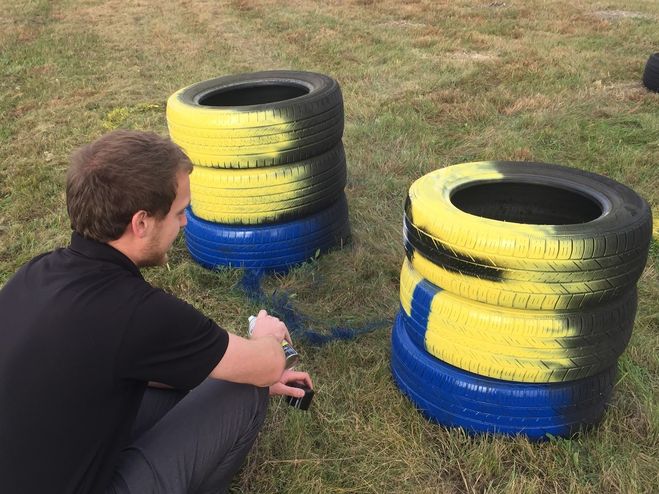 Keep in mind that after the procedure, the rubber will be sticky for several hours, which means that riding at this time is highly undesirable. Depending on the amount of mileage covered and the condition of the roads, it lasts an average of 2-3 days.
Keep in mind that after the procedure, the rubber will be sticky for several hours, which means that riding at this time is highly undesirable. Depending on the amount of mileage covered and the condition of the roads, it lasts an average of 2-3 days.
After a certain time, the tires on the wheels lose their color - fade, affecting the overall appearance of the car. There are two ways to restore the lost shine and color of wheel tires: using blackening or paint for rubber. nine0003
Content
The process of blackening tires involves covering the tires with a special liquid - blackener. You can buy such a tool at the car market or in special stores. The range of factory blacks is represented by two types of blackening mixtures:
You can buy such a tool at the car market or in special stores. The range of factory blacks is represented by two types of blackening mixtures:
 Of the shortcomings, it should be noted:
Of the shortcomings, it should be noted: In addition to improving the appearance of tires, blackeners protect rubber from external negative effects of sunlight, water, chemicals, and so on. The protective function of these substances is possible due to the creation of a thin film on the surface of the tire. nine0003
We recommend watching a video about blackening tires at home:
Applying blackening or paint to restore the color of rubber requires a lot of money. To save the budget, many motorists make ink at home. Consider the most common recipes for these substances.
Glycerin can be purchased at the pharmacy, the substance is sold in a bottle of 25 or 40 ml. To obtain an ink solution, you will need from 5 to 7 bottles. Glycerin is poured into a container with a sprayer (a container for washing glasses or spraying plants, and so on). Water is poured into the same container, a ratio of 1: 1, for example, for 6 bottles of glycerin you will need:
To obtain an ink solution, you will need from 5 to 7 bottles. Glycerin is poured into a container with a sprayer (a container for washing glasses or spraying plants, and so on). Water is poured into the same container, a ratio of 1: 1, for example, for 6 bottles of glycerin you will need:
In the first version, the volume of the glycerine bottle is 25 ml, in the second, 40 ml. Before applying a mixture of glycerin and water to tires, the tires are thoroughly washed and dried. The ink mixture is applied to a sponge or rag, with which the blackening process is performed. Advantages of using a glycerin mixture:
Disadvantages:

A soap bar with at least 70% fatty acids will do. The process of returning the lost color to tires consists of the following steps:
The advantages of this method:
Disadvantages: Laundry soap dries out tires a lot, reducing their resource - this method of blackening should not be used regularly.
To blacken tires in this way, apply a little silicone to a sponge and use it to rub the substance into a clean surface of the tire. Advantages:

Disadvantages: The cost of the product is slightly higher than previous methods.
Using this method you can use:
Before applying the decalcifier, the tires are washed, then a little decalcifying agent is applied to a sponge or rag and with its help the substance is rubbed into the rubber surface. Benefits:
Disadvantages: you can not use the car immediately after blackening, you need to wait until the coloring matter hardens - from 10 to 15 minutes.
You can return the lost gloss to tires by applying blackening or paint for rubber. The second method allows you to achieve a longer result than the first method. In addition, painting tires allows you to tune the car, making it look original.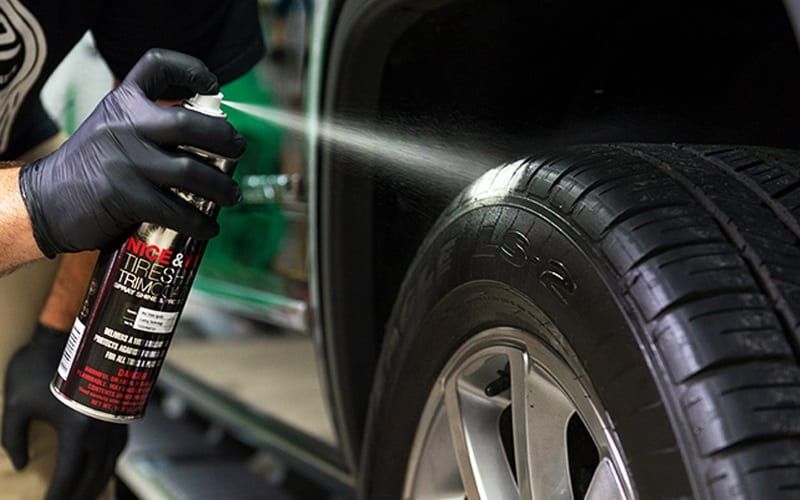 nine0003
nine0003
Please note: you need to paint the outer part of the tire, the inner side of the product is invisible, and the working surface is in contact with the roadway. Perhaps incomplete coloring of the outside of the tire, it is allowed to apply special inscriptions that differ in color from the color of the tire. For painting tires, it is better to use a special paint with the following properties:
If you paint the tires with a special paint, you can protect the rubber from external factors and thus extend the life of the tires.
The most popular white rubber paint, with its help, letters and inscriptions are applied to the surface of the tires, and the car acquires a retro style. If you want to use a different color scheme, you should take into account the area of painting, since the price of colored paint is high.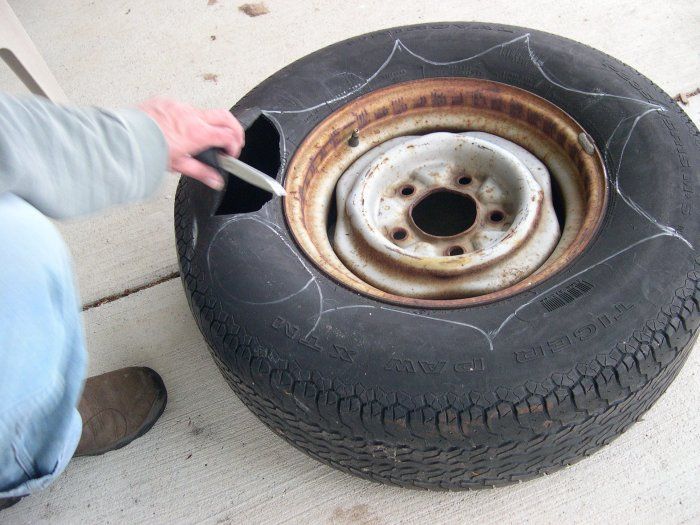 nine0003
nine0003
Rubber paints based on latex or rubber should be preferred. At the same time, keep in mind: ordinary latex paints for painting, for example, walls will not work, they will not be able to provide proper elasticity due to their low latex content.
Please note: if you want to highlight a certain inscription on the tire, you can purchase a marker filled with paint - this will greatly simplify the work.
When starting the painting process, carry out preparatory work:
Necessary tools and materials:
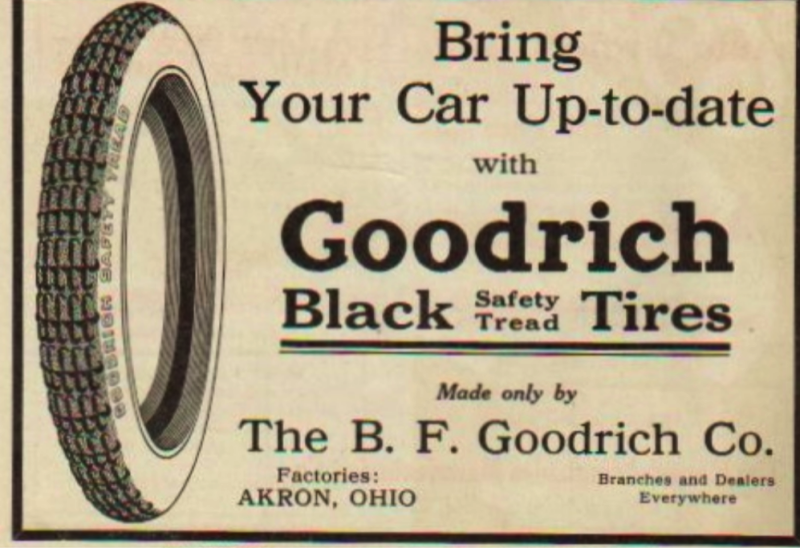
When painting, the sealant is slightly warmed up so that it adheres better to the rubber surface. If you plan to make an inscription or a drawing on the tire, then masking tape is used to obtain a clear line. It is possible to paint over a tire well by applying several layers of paint, approximately 2-3 layers. Painted rubber can be used 24 hours after the final coat of paint has been applied. nine0003
When applying certain lines or symbols to the rubber, keep in mind:
Of the presented options for applying the line, the most advantageous are stripes along the inner contour of the product.